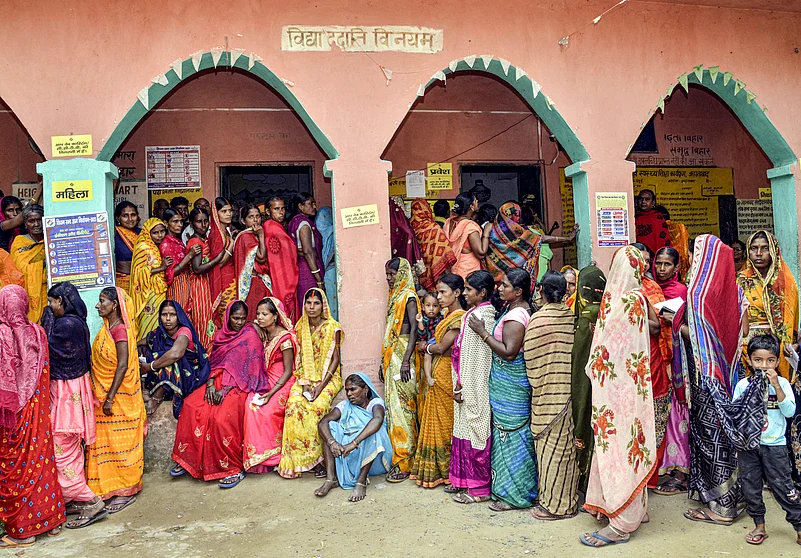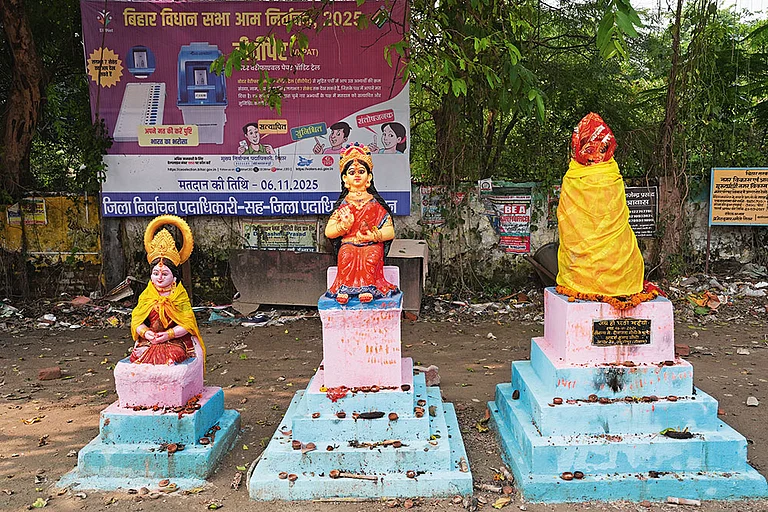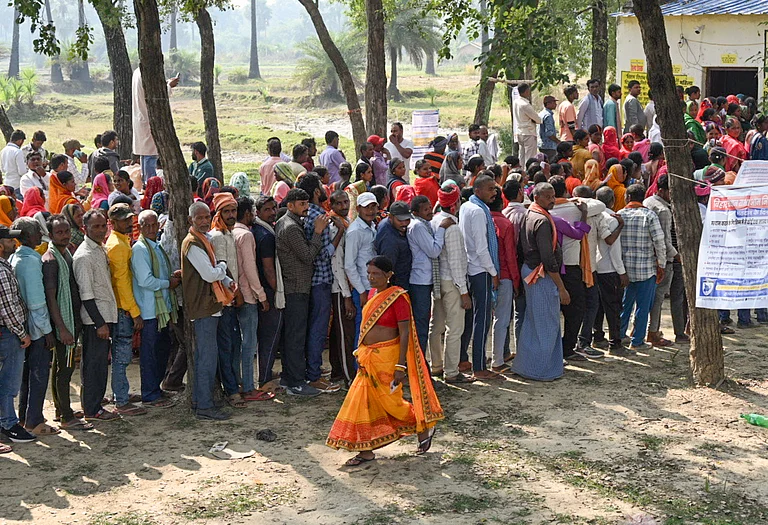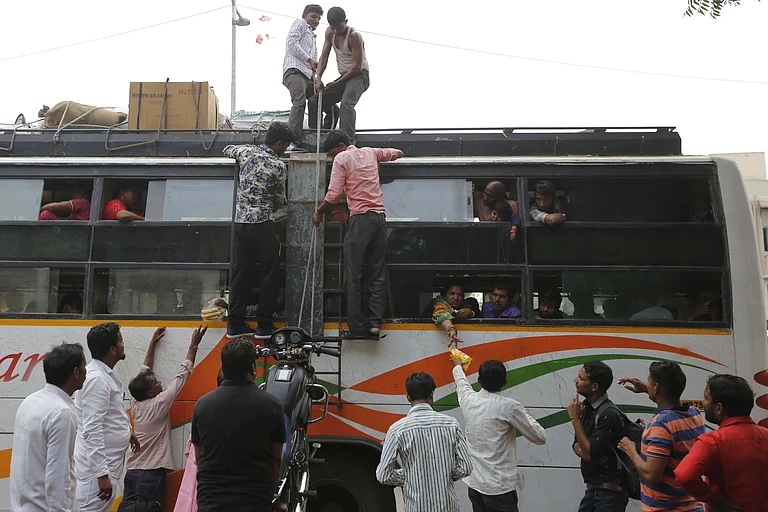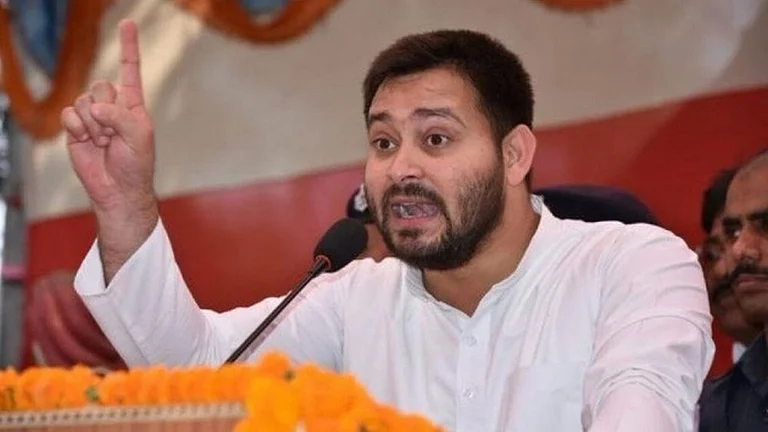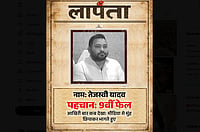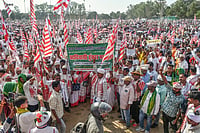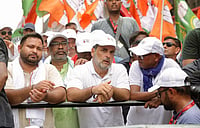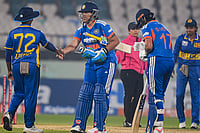
In the first phase on November 6, there were 1,314 candidates out of which 1,192 men and only 122 women
In the second phase on November 11, of 1,302 candidates, 1,165 were men, while just 136 were women, and one candidate identified as third gender
Women’s representation among candidates was 9.28 per cent in the first phase and 10.45 per cent in the second phase—a meagre figure compared to their overwhelming voter presence
With the completion of the second phase of polling on November 11, voting for the Bihar Assembly elections has concluded. The results, scheduled for November 14, will determine how many seats each party or alliance secures and which coalition crosses the majority mark.
This election revealed several striking statistics. Bihar recorded its highest-ever voter turnout of 66.9 per cent, the most since 1951. What stood out even more was women’s participation: an unprecedented 71 per cent of women voted, surpassing men’s turnout of 62.8 per cent by a significant 8.2 percentage points.
Yet, paradoxically, women candidates accounted for only 9.86 per cent of the total contestants. To understand this imbalance, consider the numbers:
In the first phase on November 6, there were 1,314 candidates out of which 1,192 men and only 122 women. In the second phase on November 11, of 1,302 candidates, 1,165 were men, while just 136 were women, and one candidate identified as third gender.
This means women’s representation among candidates was 9.28 per cent in the first phase and 10.45 per cent in the second phase—a meagre figure compared to their overwhelming voter presence. Out of 7.45 crore registered voters, there were 3.93 crore men and 3.51 crore women.
Political Promises vs. Reality
In 2023, the Women’s Reservation Bill was passed in Parliament, promising 33 per cent reservation for women in both national and state legislatures. However, since it has yet to be implemented, this remains only a commitment on paper. Despite their public stance in favour of women’s political representation, both the NDA and the INDIA blochave fielded only about 12 per cent women candidates in Bihar’s 243-member Assembly.
The BJP, which often champions the slogan of “women’s empowerment”, fielded 13 women out of 101 candidates— roughly 12.8 per cent. The Congress, which frequently invokes Rahul Gandhi’s call for “proportionate representation according to population”, fielded just five women out of 65 candidates, or about seven per cent. In fact, Congress ranked last among major parties in terms of women’s representation.
Women Leaders Question Their Own Parties
Sarwat Fatema, head of the Bihar Women’s Wing of the Congress, has publicly criticised her party for sidelining women. “I have been asking why we gave only seven per cent of tickets to women instead of 33 per cent,” she said.
“We talk about equal representation—‘jitni aabadi, utni hissedari’ (representation proportional to population)—but where is that share? I am the first woman president of the Minority Congress in Bihar, and earlier presidents always got tickets. Why was I denied?” Fatema adds that after the results are declared, she will raise the issue of women’s representation within the party itself but insists that the question must also be asked of senior male leaders: why did they not give tickets to women?
Voters Ahead, Representation Behind
Women, who make up nearly half the population, have outperformed men in voter turnout for the past three consecutive elections. Yet their presence as candidates has remained stagnant, even declining in some years. Let’s look at the numbers:
2010: Out of 3,523 candidates, 307 were women—8.7 per cent
2015: Out of 3,450 candidates, 273 were women—7.9 per cent
2020: Out of 3,733 candidates, 370 were women — 9.9 per cent
2025: Out of 2,616 candidates, women constitute around 10 per cent, men about 90 per cent
But when it comes to voting, women have led consistently:
2010: Women—54.5%, Men—51.1%
2015: Women—60.5%, Men—53.3%
2020: Women—59.7%, Men—54.5%
2025: Women—71.6%, Men—62.8%
Over the past fifteen years, women’s political participation as voters has surged, but their representation as candidates and legislators remains marginal.
“Want Women’s Votes, Not Women in Politics”
Women’s rights activist Nivedita Jha puts it bluntly: “Political parties want women’s votes, not women in politics. Women voters have played a decisive role in Nitish Kumar’s victories. That’s why he announced cash incentives for women just before the elections. It shows they care about women’s votes, not their participation. This is true across parties—even the Left is not immune—because patriarchy still dominates political structures.” Jha adds that though women make up half the population, even the Women’s Reservation Bill does not grant full equality, it only promises 33 per cent. “And that too has been deferred until after the 2029 delimitation,” she notes.
“So, equality remains postponed.” Dr Devina Krishna, a professor at Patna Women’s College, emphasises that women’s electoral participation has steadily risen each election. “Women are voting in greater numbers than men,” she says. “But if their political representation doesn’t increase, talk of an inclusive society rings hollow. Inclusion isn’t just about slogans—it must be practiced. Equal representation of all genders is essential to build a truly inclusive democracy.”
Women’s Success Rate in the Assembly
The number of women winning Assembly seats has actually declined over the past three elections:
2010: 34 women won—14 per cent of the Assembly
2015: 28 women won— 11.5 per cent
2020: 26 women won—10.7 per cent
The Bihar elections expose a striking paradox: women dominate as voters but remain underrepresented as candidates and legislators. Despite promises of empowerment and the passage of the Women’s Reservation Bill, political parties across the spectrum have failed to reflect women’s growing democratic strength in their ticket distribution. As the numbers show, Bihar’s women have transformed from passive voters to active agents of democracy yet political power remains stubbornly male-dominated.







